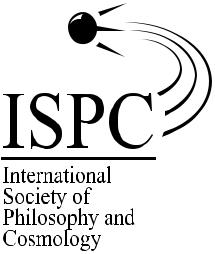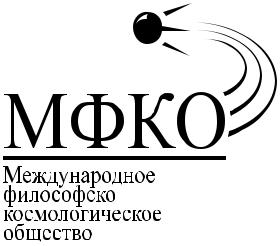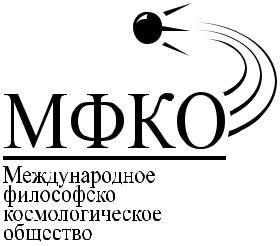International Society of
Philosophy and Cosmology
Future Human Image
Volume 8

Kyiv, 2017
Future Human Image, Volume 8
The State Registration Certificate of the print media КВ N20662-10462Р, April 17 2014
http://fhijournal.org/
E-mail: bazaluk@ispcjournal.org
Printed in the manner of a collective monograph "Future Human Image:
Whom and How to Educate in the Rising Generations?" since 2011.
Cosmology (Minutes of meeting N 18 from August 10 2017)
Editor-in-Chief
Oleg Bazaluk, Doctor of Sciences, Professor
Editorial Board
Denys Svyrydenko, Doctor of Sciences, Professor (Deputy Editor-in-Chief, Ukraine)
Galyna Beregova, Doctor of Sciences, Professor (Russia)
Anna Brodsky, PhD, Professor (USA)
Enric Cabrejas (Spain)
Svitlana Cherepanova, Doctor of Sciences, Professor (Ukraine)
Leonid Dzhahaya, Doctor of Sciences, Professor (Georgia)
Serhiy Klepko, Doctor of Sciences, Professor (Ukraine)
Sergey Krichevskiy, Doctor of Sciences, Professor (Russia)
Akop Nazaretyan, Doctor of Sciences, Professor (Russia)
Andrey Ostapenko, Doctor of Sciences, Professor (Russia)
Olgha Petriashvili, Doctor of Sciences, Professor (Georgia)
Valentin Rybalka, Doctor of Sciences, Professor (Ukraine)
Raushan Shindaulova, Doctor of Sciences, Associate Professor (Kazakhstan)
Arkady Ursul, Doctor of Sciences, Professor (Russia)
The Journal is indexed in the following international databases:
http://www.bazaluk.org/
Мiжнародне фiлософсько-космологiчне товариство
Future Human Image
Том 8

Київ, 2017
Future Human Image, Том 8
Свiдоцтво про державну реєстрацiю друкованого засобу масової iнформацiї --
КВ N20662-10462Р, вiд 17 квiтня 2014 року
http://fhijournal.org/
E-mail: bazaluk@ispcjournal.org
Видається як колективна монографiя "Образ людини майбутнього:
Кого i Як виховувати в пiдростаючих поколiннях" з 2011 року.
Як науковий журнал "Future Human Image" видається з 2014 року.
Друкується за рiшенням наукової ради Мiжнародного фiлософсько-космологiчного товариства (протокол N 6 вiд 18 серпня 2017 року)
Головний редактор
Олег Базалук, доктор фiлософських наук, професор
Редакцiйна колегiя
Денис Свириденко, доктор фiлософських наук, професор
(заступник гол. редактора, Україна)
Галина Берегова, доктор фiлософських наук, професор (Україна)
Ганна Бродски, доктор фiлологичних наук, професор (США)
Eнрiк Кабрегас (Iспанiя)
Свiтлана Черепанова, доктор фiлософських наук, професор (Україна)
Сергiй Крiчевський, доктор фiлософських наук, професор (Росiя)
Акоп Назаретян, доктор фiлософських наук, професор (Росiя)
Aндрiй Остапенко, доктор педагогичних наук, професор (Росiя)
Oльга Петрiашвiлi, доктор фiлологичних наук, професор (Грузiя)
Валентин Рибалка, доктор психологичних наук, професор (Україна)
Раушан Шиндаулова, доктор фiлософських наук, доцент (Kазахстан)
Аркадiй Урсул, доктор фiлософських наук, професор (Росiя)
Журнал iндексується в наступних мiжнародних базах:
Мiжнародне фiлософсько-космологiчне товариство:
http://www.bazaluk.org/
Международное философско-космологическое общество
Future Human Image
Том 8

Київ, 2017
Future Human Image, Том 8
Свiдоцтво про державну реєстрацiю друкованого засобу масової iнформацiї --
КВ N20662-10462Р, от 17 апреля 2014 года
http://fhijournal.org/
E-mail: bazaluk@ispcjournal.org
Печатается по решению научного совета Международного философско-космологического общества (протокол N 6 от 18 августа 2017 г.)
Главный редактор
Олег Базалук, доктор философских наук, профессор
Редакционная коллегия
Денис Свириденко, доктор философских наук, профессор
(зам. главного редактора, Украина)
Галина Берегова, доктор философских наук, профессор (Украина)
Анна Бродски, доктор филологических наук, профессор (США)
Eнрик Кабрегас (Испания)
Светлана Черепанова, доктор философских наук, профессор (Украина)
Сергей Кричевский, доктор философских наук, профессор (Россия)
Акоп Назаретян, доктор философских наук, профессор (Россия)
Aндрей Остапенко, доктор педагогических наук, профессор (Россия)
Oльга Петриашвили, доктор филологических наук, профессор (Грузия)
Валентин Рибалка, доктор психологических наук, профессор (Украина)
Раушан Шиндаулова, доктор философских наук, доцент (Казахстан)
Аркадий Урсул, доктор философских наук, профессор (Россия)
Журнал индексируется в следующих международных базах данных:
Международное философско-космологическое общество:
http://www.bazaluk.org/